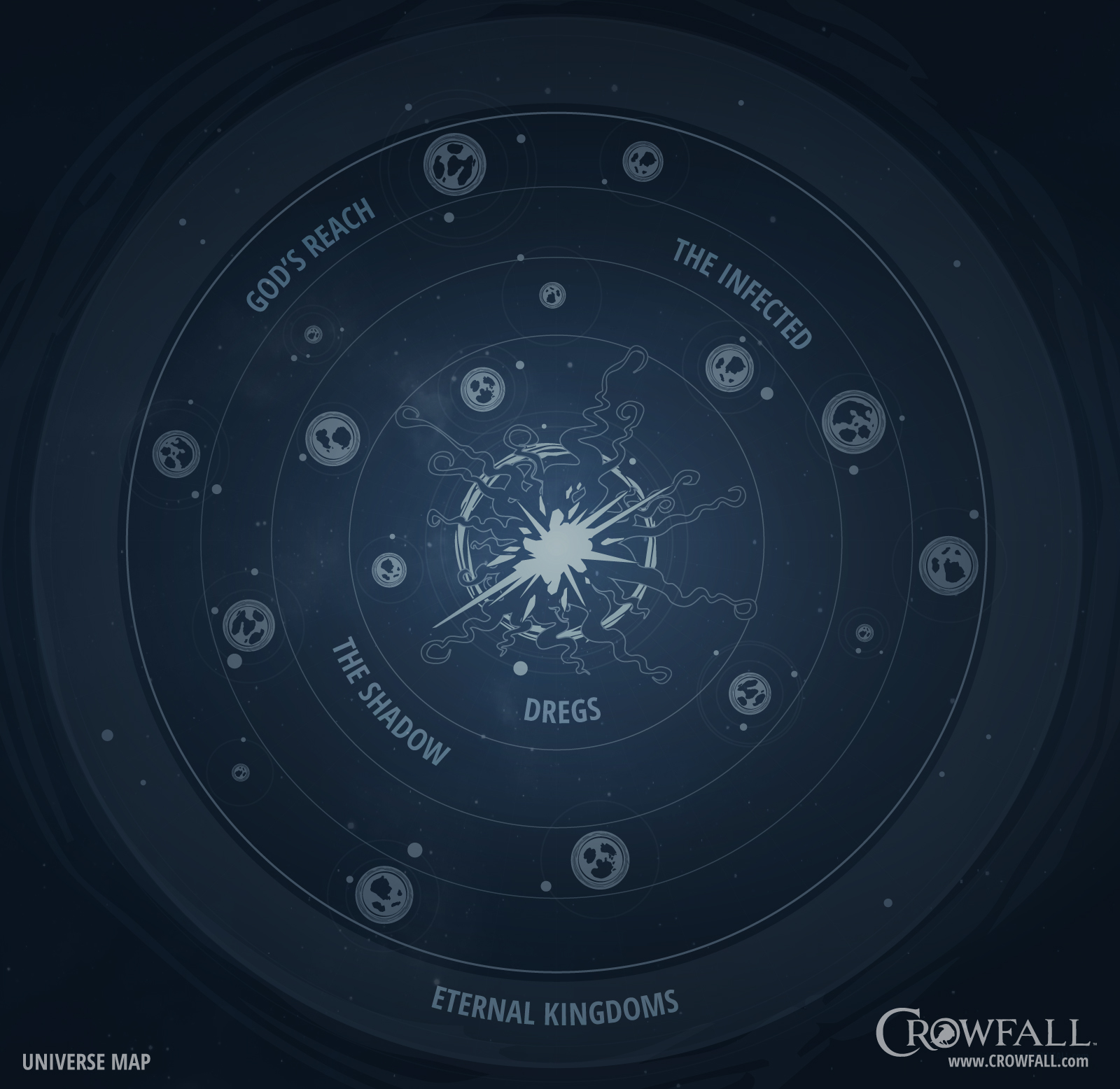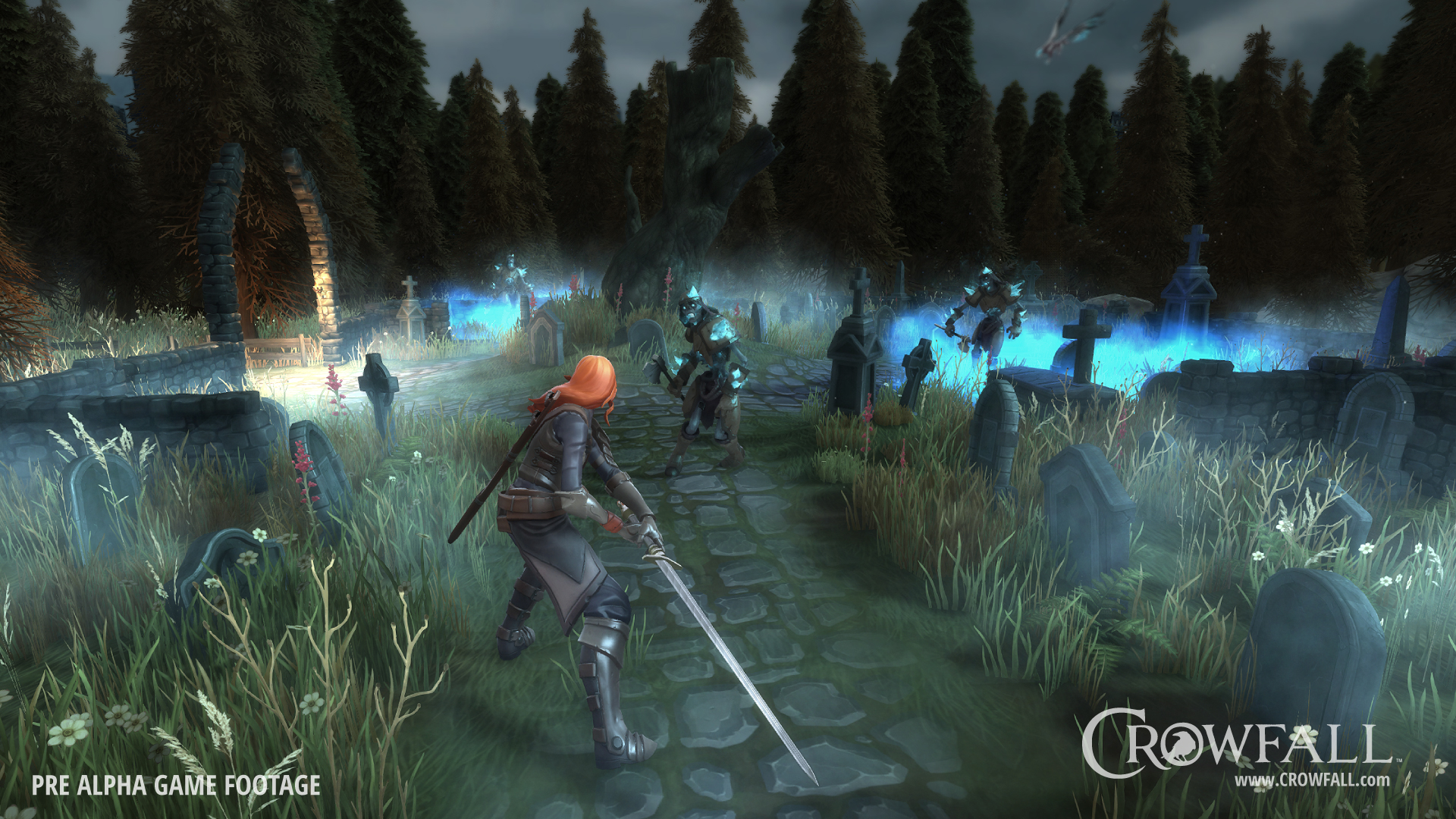Last week marked the 30th edition of the Game Developers Conference (GDC), once again providing ample opportunity for devs to meet and discuss the latest trends and all the wizardry involved in the age-old craft of game development. Needless to say, with Oculus Rift, HTC Vive and PlayStation VR all being scheduled for releases in 2016, this time around most discussion was focused on the benefits of playing games with huge devices plopped on top of people’s heads. Yet, among all the preachers of virtual reality there were a few (well, only two) talks focused on crowdfunding, one of which was presented by industry veteran Gordon Walton.
Apart from being a former BioWare vice president and a colossus in the realms of massively multiplayer online games, Mr. Walton is also the founder of ArtCraft Entertainment – the company behind last year’s more than successful campaign for Crowfall. Maybe also due to his involvement in the development of iconic MMOs such as Ultima Online and Star Wars: The Old Republic, Walton’s talk was specifically focused on “building and managing a crowdfunding community”.
You’d think the word ‘crowdfunding’ would be enough for most people to realize how important communication is when relying on people to fund your vision, but according to Walton the biggest pitfall of crowdfunded campaigns is creators’ unwillingness to keep backers involved. “You’ve got to have a community, you just can’t do it without one,” he said, offering perhaps the most valid piece of advice to developers looking to get lost in the perils of Kickstarter and company. Walton actually gave John Smedley’s Hero’s Song as an example of a recent Kickstarter that failed to find an audience prior to going live, the problem there lying in that precise expectation of a user base existing before the product was launched to the public. Interestingly enough, he also mentioned how his company (ArtCraft Entertainment) hired a community manager before doing anything else, knowing how important discussion and “hype-generation” would be for the success of Crowfall.
While hiring professionals might not be such an easy task for developers who lack substantial funds pre-launch, there is always the case of maintaining a dev blog of your game before it goes live. Even better, you can maintain an online presence and build a community by creating a thread on forums such as TIGSource, similar to the way Mable & The Wood‘s developer has been handling things (that being an example of an upcoming Kickstarter you’ve already heard of just by reading this article).
But even if that isn’t the case and everything goes smoothly during the launch of a campaign, many creators still fall into silence shortly after meeting their goals. There are plenty of examples of developers that disappear for months, sometimes years, only to (occasionally) resurface miraculously with measly updates offering little more than excuses and apologies. We’ve covered plenty of those, and that abundance alone proves how difficult good crowdfunding can be. To give you an example of what’s required, Walton said that ideally you’d want to be able to reply to any comment or complaint in the time-span of 15 minutes. A 24-hour window is simply too long.
Another key point mentioned during the talk was the importance on catering to your “mavens”, those simply being the people that are most vocal and active when it comes to updates. Or, as Walton put it, “you’ll know who they are because they will post a lot“. Generating a constant communication with passionate fans might seem like a no-brainer at first, but I think many developers don’t realize how important it is to actually respond to backers’ comments and feedback. Of course, this could be done with weekly video updates, or even developer streams, but you get the point.
I feel like all of this is especially true in today’s open and transparent ways of development, with consumers slowly starting to get initiated into a new way of thinking and a constant desire for active participation. Started with Kickstarter and Early Access and later transformed into services like Fig and Square Enix Collective, this particular culture is rooted way deeper than you’d expect. Exclusivity and reward are now staple elements for almost all types of services, with platforms like Patreon, Twitch and recently YouTube offering special goodies to these so called mavens. It’s all about the community.
From that point of view then, Gordon Walton’s words are making even more sense. The requirements for starting and maintaining a successful campaign haven’t been bigger, and quite frankly the situation is similar even if you don’t rely on crowdfunding. Simply put, with so many games coming out each week you’re kind of lost and thrown in the dark if you lack the ability to actively engage with an audience. On the bright side, there are also plenty of GDC talks such as the one we’re currently discussing.
Thanks, GamesIndustry.biz






Very important to build a network and engage the audience prior to any campaign going live. Social media channels like twitter, facebook, reddit, forums can be great. But you should focus on a more targeted audience (https://www.thrinacia.com/blog/post/reaching-your-target-audience-for-a-crowdfunding-campaign-quick-tips) if you can. You want to engage people that closely relate to your project.